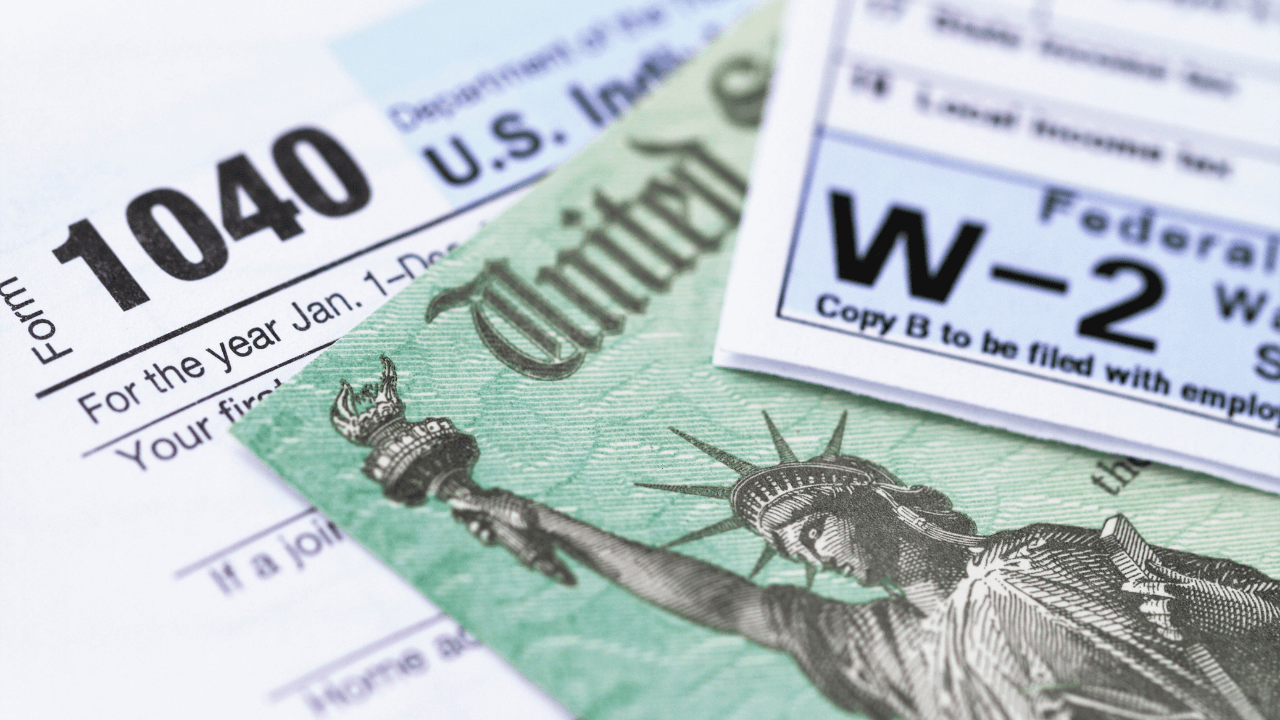Language:
10 Essential IRS Tax Forms You Need to Know

Millions of Americans face the same daunting task — tackling their taxes every year. The mountain of paperwork, confusing forms, and looming deadlines can be enough to send anyone running for the hills.
The good news is that with a bit of knowledge and the right tools, tax season doesn’t have to be a nightmare.
Understanding the essential IRS forms you might encounter can make a huge difference. Not only will it save you precious time and frustration, but it can also help you avoid costly mistakes and even uncover valuable tax breaks.
Think of this article as your personal tax season roadmap. We’ll break down the 10 essential IRS tax forms you’ll most likely encounter. We’ll explain what each one is for, who typically uses them, and what information you must fill out correctly.
We’ll cover all the basics, from the core Form 1040 to specialized schedules for self-employed individuals and investors.
By the end of this guide, you’ll be equipped to navigate various tax forms confidently. So, grab a pen (or fire up your laptop), and let’s dive into the world of essential IRS tax forms!
1. Form 1040
Form 1040 is the main form for filing federal income taxes with the IRS. Most taxpayers will use it, even if they have some self-employment income on the side. However, if your tax situation is super complex, other versions, like Form 1040-SR for seniors or Form 1040-NR for non-residents, exist.
The excellent news is Form 1040 is a one-stop shop for reporting all your income. It will help determine how much tax you owe (or how much of a refund you’re getting!).
This crucial IRS tax form is broken down into sections that walk you through the process step-by-step. Here’s a quick rundown of the key sections:
- Income: This is where you report all your taxable income, like wages from your job, interest from your savings account, or even unemployment benefits.
- Adjustments to Income: Certain deductions can be subtracted from your total income before calculating your tax burden. This section covers contributions to retirement accounts, student loan interest payments, and more.
- Deductions: Here’s where you can claim deductions for expenses you incurred throughout the year — mortgage interest, charitable donations, or medical bills (if they exceed a certain amount). Deductions can lower your taxable income and save you money on taxes.
- Credits: Tax credits are like dollar-for-dollar reductions in your tax bill. Many different credits are available, like the Earned Income Credit for low- and moderate-income earners or the Child Tax Credit.
- Taxes: After factoring in all your income, adjustments, deductions, and credits, this section calculates the actual amount of tax you owe.
By the end of Form 1040, you’ll know exactly where you stand with the IRS — whether you owe them money or they owe you a refund.
Don’t worry; the IRS provides detailed instructions for each section of the form, so you’ll have all the necessary information to fill it out correctly.
2. Schedule A
Imagine you have two options for saving money on your taxes — a flat discount coupon or a stack of individual coupons for specific items. Schedule A is like that stack of coupons. It lets you itemize your deductions, saving you more than the standard IRS deduction.
Schedule A is best suited for taxpayers with many annual deductible expenses.
For instance, if you have high medical bills (that exceed a certain percentage of your income), make regular charitable donations, or pay a hefty mortgage interest, itemizing with Schedule A could be a good strategy.
Medical and dental expenses, charitable donations, mortgage interest, and State and Local Taxes are common deductions on Schedule A.
Remember, this isn’t an exhaustive list. The IRS website has a complete list of allowable itemized deductions you can explore.
If you think itemizing might benefit you, keep good records of your yearly expenses to make filling out this IRS tax form a breeze.
3. Schedule B
If you earn interest or ordinary dividends from your investments, Schedule B is where you report this income to the IRS.
Think of Schedule B as your investment income log. It applies if you have earnings from stocks, bonds, savings accounts, or even real estate investment trusts (REITs). Basically, any interest or ordinary dividends you receive throughout the year get reported here.
Filling out Schedule B is pretty straightforward. You’ll need information from the Forms 1099-INT and 1099-DIV you receive from your banks, brokers, or investment firms.
These forms detail the amount of interest and ordinary dividends you earned. Simply copy the info from the corresponding boxes on those forms onto Schedule B.
Remember, Schedule B only applies to ordinary dividends — not capital gains from selling investments. Those get reported elsewhere. So, Schedule B is the best way to keep your investment income organized.
4. Schedule C
Schedule C is your go-to IRS tax form if you’re running your own show as a freelancer, consultant, or independent contractor. Think of it as your business tax return within your main tax return (Form 1040). It’s where you report all the income your business generated and the expenses you incurred to keep it running.
Why do freelancers and other self-employed folks use Schedule C? For starters, Schedule C separates your business finances from your personal finances. This makes tax filing and record-keeping much more accessible.
Secondly, by reporting your business income and expenses on Schedule C, you can easily calculate your net profit (or loss) for the year. This figure gets transferred to your Form 1040 to determine your overall tax liability.
Key Sections of Schedule C:
- Business Income: This section is where you report all the revenue your business brought in throughout the year — sales of products or services, commissions, fees, or any other business income.
- Business Expenses: Now comes the fun part of deducting your business costs! Office supplies, equipment rental, and marketing expenses all qualify as deductions if they’re ordinary and necessary for running your business.
- Cost of Goods Sold (if applicable): This section is for businesses that sell products. It allows you to deduct the price of the materials or inventory you purchased to create those products.
By accurately filling out Schedule C, you can ensure you’re paying the correct taxes on your self-employment income. It also maximizes your deductions to lower your tax bill potentially.
Remember, the IRS provides detailed instructions for Schedule C, so don’t hesitate to consult them if you have any questions.
5. Schedule D
Sold some stocks, bonds, or even real estate for a profit (or a loss)? If so, you must report those transactions to the IRS on Schedule D. Think of it as your investment sales report card. It keeps track of the capital gains (profits) and losses from buying and selling various assets.
Schedule D is primarily used by investors who buy and sell capital assets, such as stocks, bonds, real estate, and even collectibles like rare coins or artwork.
You have a capital gain whenever you sell an investment for more than you paid for it. On the flip side, if you sell an investment for less than you paid, you have a capital loss.
Here’s a key point: the IRS treats short-term and long-term capital gains/losses differently:
- Short-term gains/losses apply to investments you held for one year or less before selling. These are typically taxed at your ordinary income tax rate.
- Long-term gains/losses apply to investments you have held for over a year. The tax rates for long-term capital gains are generally lower than ordinary income tax rates, which can be a tax advantage for investors.
Schedule D itself is fairly straightforward. You’ll need information about the investment you sold, including the date you acquired it, the date you sold it, the sale price, and your original purchase price. This information is typically found on brokerage statements or closing documents.
By accurately reporting your capital gains and losses on Schedule D, you ensure you pay correct taxes on your investments.
Remember, Schedule D can get more complex depending on your circumstances. If you have a lot of investment sales or have questions about categorizing your gains/losses, consulting tax experts like doola is always a good idea.
6. Schedule E
Did you know there’s a dedicated form for reporting income you earn outside your regular job? Schedule E is your one-stop shop for reporting supplemental income and loss. Think of it as a separate tax return for your side hustles or passive income sources.
Whether you’re a landlord collecting rent, an artist earning royalties, or a content creator collaborating with brands, Schedule E helps you track this income and related expenses.
Schedule E is handy for various taxpayers with income beyond their primary job. Some common examples include:
- Rental Property Owners
- Royalty Earners
- Partnerships and S Corporations
- Estate and Trust Beneficiaries
Regarding Schedule E, the key is to report all your relevant income and expenses. On the income side, you’ll list the source of the revenue (e.g., rent from property, royalties from book sales), the amount received, and any other relevant details.
The good news is you can also deduct certain expenses related to earning that income. For example, rental property owners can deduct mortgage interest, property taxes, repairs, and depreciation.
Schedule E isn’t just about reporting income — it’s about calculating your net profit (or loss) from these supplemental sources. By accurately reporting your income and expenses, you can lower your overall tax liability.
7. Schedule EIC
Tax season can be stressful, but did you know there’s a potential credit waiting for some taxpayers that can significantly reduce your tax bill? That’s where the Earned Income Credit (EIC) comes in.
The EIC is a tax credit designed to help low- and moderate-income workers and families. It’s essentially a tax break from the IRS that can put extra money in your pocket. Sometimes, it can even result in a refund, even if you didn’t owe any taxes in the first place! Think of it as a reward for working hard and contributing to the tax system.
Is it really that easy? The EIC has specific eligibility requirements based on your income, filing status, and whether you have qualifying children. The IRS website has a handy EIC Eligibility Assistant tool you can use to check if you qualify.
If you think you qualify for the EIC, you’ll need to file Schedule EIC with your tax return (Form 1040).
This schedule helps you determine the amount of credit you’re eligible for based on your specific circumstances. Schedule EIC can be your gateway to a more rewarding tax season!
8. Schedule F
Schedule F is a dedicated tax form designed specifically to report the income and expenses of your agricultural endeavors. It’s your farm’s very own tax return, nestled within your main Form 1040.
Standard tax forms don’t always capture the unique income and expenses associated with running a farm. Schedule F provides a tailored approach. Thus, allowing you to accurately report your farm’s financial picture and potentially reduce your tax burden.
Schedule F is primarily used by sole proprietors and single-member LLCs engaged in farming activities. This includes raising livestock and growing crops to operating greenhouses or even Christmas tree farms.
Key Sections of Schedule F:
- Farm Income: Here you’ll report all the income your farm generates, including sales of livestock, crops, and any other farm products. Government subsidies and crop insurance payouts also get reported in this section.
- Farm Expenses: This is where you can deduct the many expenses associated with running a farm. Think fertilizer, seeds, feed for animals, equipment rentals, and even labor costs.
- Inventory: Farmers often have products like crops or livestock that haven’t been sold yet. Schedule F allows you to account for the value of your farm’s inventory, which can impact your taxable income.
By accurately completing Schedule F, you ensure you’re paying the correct amount of taxes on your farm’s income. Moreover, it allows you to claim valuable deductions that can minimize your tax liability.
The IRS provides detailed instructions for Schedule F, but remember, consulting a tax professional familiar with agricultural tax laws can be wise.
9. Schedule H
Hiring a housekeeper or personal caregiver for your home? While they help make your life easier, there’s a tax responsibility involved. Schedule H steps in to help you report and pay the necessary taxes for your household employees.
Schedule H comes into play if you pay cash wages of $2,600 or more in a calendar year to a household employee. There are some exceptions, but generally, if you’re paying someone for domestic help, you’ll likely need to use Schedule H.
Schedule H helps you report and pay Social Security and Medicare taxes and federal unemployment tax (FUTA) for your household employees. These taxes help fund important programs like Social Security and unemployment benefits.
Filling out Schedule H isn’t overly complex. You’ll need some basic information about your employee, such as their name and Social Security number, along with the total cash wages you paid them during the year. The form then guides you through calculating the employer and employee shares of Social Security and Medicare taxes and any applicable FUTA tax.
By using Schedule H, you essentially act as a small employer for tax purposes. This means you’re responsible for paying your share of the taxes and withholding the employee’s share from their wages.
Neglecting to file Schedule H can lead to penalties and back taxes. So, if you have household employees, ensure you’re correctly reporting and paying their employment taxes. Schedule H keeps you compliant and ensures your household staff receives the benefits they deserve.
10. Schedule SE
Schedule SE helps you calculate and pay self-employment taxes, which cover Social Security and Medicare for self-employed individuals. Think of it as catching up for the taxes your employer would normally withhold from your paycheck.
As a freelancer, consultant, or sole proprietor, you’re responsible for paying both the employer and employee share of these taxes. Schedule SE streamlines this process, allowing you to calculate the total tax amount based on your net self-employment income.
If you have net earnings of $400 or more from self-employment (after business expenses), you generally need to file Schedule SE. You might still need it even if you have a regular job and some side hustle income.
To fill out Schedule SE, you’ll need your net self-employment income from your Schedule C or Form 1040. The form then applies the combined Social Security and Medicare tax rates to calculate your total self-employment tax liability.
Remember, by filing Schedule SE, you’re ensuring you pay your fair share of taxes and contribute to your future Social Security and Medicare benefits.
Handle Your Taxes With doola

That’s a wrap on our essential IRS tax form guide! Now you’re familiar with the 10 essential forms you might encounter. Remember, this is just a starting point. Tax situations can get complex, especially if you own a business, have significant investments, or face unique circumstances.
Don’t be afraid to seek help! Schedule a free consultation with a doola tax expert for peace of mind. We’ll ensure you’re filing accurately and taking advantage of all the deductions and credits you deserve.
Ready to conquer taxes with confidence? Get started on the doola total compliance package today! Our team of experts will guide you through every step and ensure you’re doing everything right. Don’t stress, get doola to handle the hassles!
Keep reading
Start your dream business and keep it 100% compliant
Turn your dream idea into your dream business.














